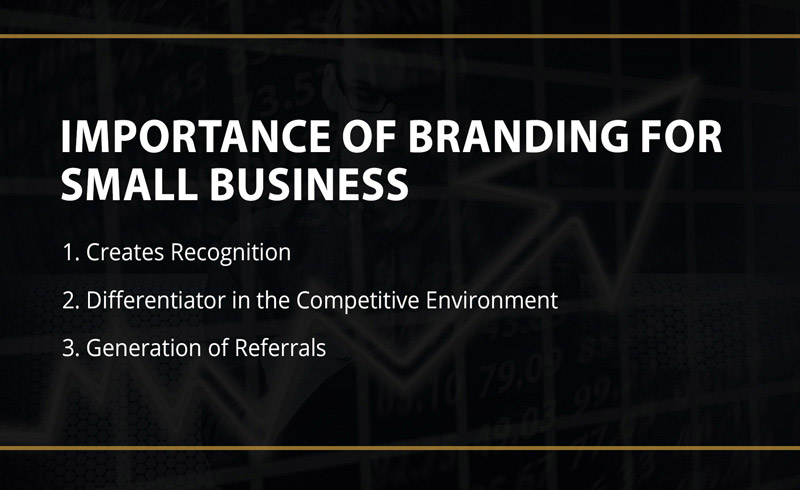
What are Some Specific Branding Guidelines for Small Businesses?
Many small businesses feel branding is reserved for large corporations with large marketing expenditures. They are passing up a tremendous chance. Small company branding is a superpower because it helps your business look more strategic and more significant than it is.
Do not avoid branding in haste to start your business. Rather than that, invest the required time in developing your brand; it will pay dividends for your business in the long run.
Many reasons for a small business to undertake branding as a core operational function. Before going to the branding guidelines for small and medium enterprises, let’s look at why branding is necessary for these organizations.
Importance of Branding for Small Business
1. Creates Recognition
A logo is a critical component of a brand since it serves as its ” face ” that consumers quickly identify. A good logo design should be simple enough to be remembered yet strong enough to convey the intended message about your business.
2. Differentiators in the Competitive Environment
Differentiating your organization, products, and competitors’ offerings is extremely important. In many cases, small and medium organizations take differentiation lightly. By distinguishing yourself from the competitors, you may jump ahead of the pack. This will assist you in developing your brand identity and enabling people to connect with your goods and services, therefore encouraging them to become new customers.
3. Generation of Referrals
Consumers ‘word of mouth is the most effective type of marketing. A strong brand image will encourage conversation within the community, which will result in recommendations. The value of viral diffusion of a message through social media cannot be overstated, and excellent branding may assist in entirely using that medium.

Now that we know why branding is necessary let’s look at the following guidelines that will help you to do the branding of your own small or medium organization,
5 Small Business Branding Guidelines
The most significant branding difficulty for most small companies is finding the time to identify their brand and create a set of brand standards.
Here are five small company branding rules to get you started.
1. State your organization’s purpose
Consider aims other than financial. What do you want to achieve with your firm more significant than the individuals’ labor? What impact do you want your organization to have? This is critical for millennials to understand.
A corporate branding purpose is a declaration of the concepts that guide your operations and connect them to your audience’s more significant goals.
You must communicate this idea to the creatives who design your company’s logo and other visual (and aural) communications.
2. Identify your target audience
Your target audience comprises different prospects, customers, influencers, and staff. To have a deeper understanding of your audience, create a marketing persona. Confirm information with surveys and interviews. What are their preferences and aversions? How do people feel about your enterprise? This significantly affects how simple or difficult it will be to convince them to purchase from you.
Do not just consider the answers to these questions. Make a note of them for future reference and share them with your creative resource personnel.
3. Competitor Analysis
Evaluate a diverse spectrum of rivals, both online and off. Include the industry’s leading players in your sector and retail in general, such as Walmart, Amazon, and eBay. Analyze their brand representation across channels and platforms.
Consider your prospects’ point of view while analyzing close replacements. Which trade-offs will they make and why? For instance, a customer may check out a book from the library rather than purchase or download one.
Respond to the question, “Why should a client choose you above your competitors?” If you’re at a loss for how to answer, chances are your prospects are as well.
4. Identify critical contexts in which you are most relevant
This part includes all the additional aspects of your brand. For example, the way your brand looks, what it makes the customers feel, etc. Moreover, you have to consider everything regarding your brands, such as look and feel, color, mascot, typography, stories, and brand platforms. Take everything that matters to you because it will help you shape your brand to be attractive to your target audience.
Though, a small firm, by definition, cannot appeal to everyone. You must discover the sweet spot in which you can develop a community that requires your specific knowledge.
Assess the aspects you want to represent your company before choosing a design firm. They should have a more profound significance for you and your audience since they will form the basis of your logo and other brand manifestations.
Create a brand and associated logo that encapsulates your business’s soul seems professional and connects with your target audience. Maintain an essential and easy-to-use interface.
Read more about HOW TO BUILD BRAND IDENTITY?
5. Take considerable care while naming your business and developing a slogan.
Your company name is more significant than you may believe. It is your handle that distinguishes you and makes you discoverable and unforgettable.
Conduct research on the company name you chose to ensure that:
- It is not a trademark held by another party.
- It does not imply anything negative in a significant foreign language.
- It is available for registration as a domain name and social media use.
Your tagline is the succinct expression of its business’s objective; your reason to exist.
Finally, create your own small company branding guidelines for integrating brand components into business communications. Then detail why and how they were produced and how to utilize them.
While consistency is critical for small company branding, standards must also allow artistic creativity and fun.
While creating branding documentation may seem time-consuming in the near term, it eliminates confusion and duplication of work each time a message or piece of content is prepared.
Additionally, it ensures constant representation of your brand, avoiding unnecessary development and advertising costs.


